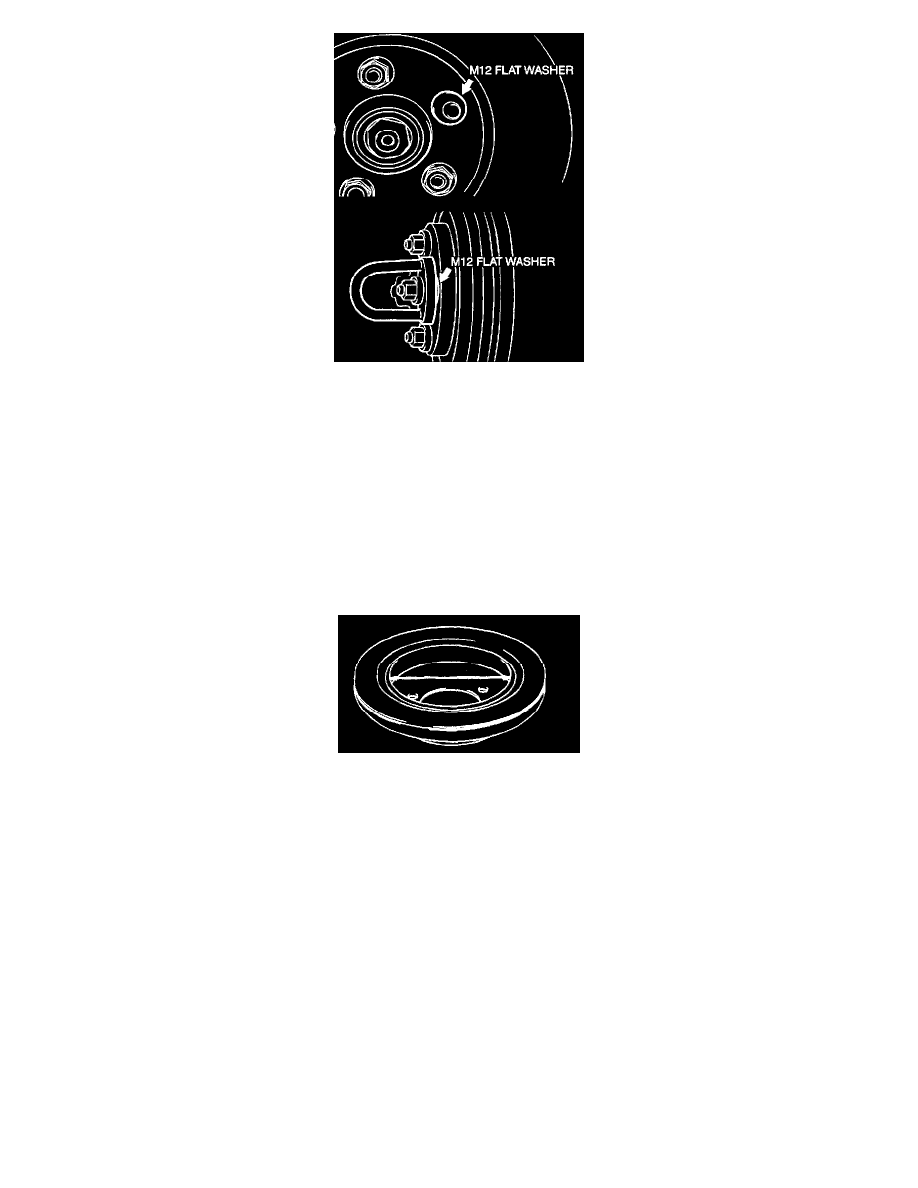Eclipse RS L4-2350cc 2.4L SOHC MFI (2002)

CAUTION:
^
After a new brake disc is installed, always grind the brake disc with on-the-car type brake lathe. If this step is not carried out, the brake disc
runabout exceeds the specified value, resulting in judder.
^
When the on-the-car type lathe is used, first install M12 flat washer on the stud bolt in the brake disc side according to the figure, and then
install the adapter. If the adapter is installed with M12 flat washer not seated, the brake disc rotor may be deformed, resulting in inaccurate
grinding.
^
Grind the brake disc with all wheel nub diagonally and equally tightened to the specified torque 100 Nm (74 ft. lbs.). When all numbers of
wheel nub are not used, or the tightening torque is excessive or not equal, the brake disc rotor or drum may be deformed, resulting in judder.
3. If the disc is less than 8.4 mm (0.33 inch) thick, replace it with a new one if thickness variation exceeds the specification, turn rotor with an
on-the-car brake lathe ("Accuturn-8750" or equivalent). If the calculated final thickness is less than the standard value, replace the disc.
BRAKE DISC INSIDE DIAMETER CHECK
1. Remove the rear brake assembly, raise the rear brake assembly and secure it with a wire, etc.
2. Remove the brake disc.
3. Measure the inside diameter of the hub and disc at two or more locations.
Standard value: 168.0 mm (6.61 inches)
Limit: 169.0 mm (6.65 inches)
4. Replace the brake discs and shoe and lining assembly when the wear exceeds the limit value or if the measured areas are not equal to each other.
(concentric).
